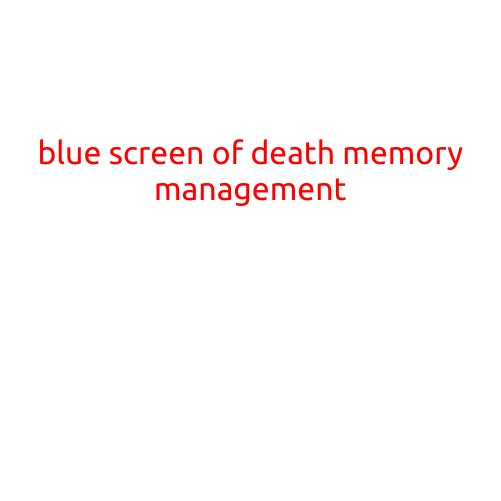
The Old Blue Screen of Death: A Blast from the Past
In the early days of personal computing, the blue screen of death (BSoD) was a familiar sight for many. The BSoD was a dreaded error screen that would appear when a Windows system crashed, caused by a critical system failure or hardware issue. Today, we’re taking a trip down memory lane to look back at the old blue screen of death and how it has evolved over the years.
What was the Old Blue Screen of Death?
The old blue screen of death, also known as the “Bug Check,” was first introduced with Windows NT 2.0 in 1993. It was designed to provide a clear and concise way to report errors and help developers and technicians diagnose and fix problems. The screen would display a garish blue background with a white font, displaying a cryptic error message, such as “IRQL_NOT_LESS_OR_EQUAL” or “NTFS_FILE_SYSTEM.”
The Anatomy of the Old Blue Screen of Death
The old BSoD screen was a simple but effective way to convey information about the error. It typically included:
- Error Code: A numerical code that identified the specific error.
- Error Message: A brief text description of the error, often in Latin or technical jargon.
- Arguments: Additional information about the error, such as the address or parameter affected.
- Line Number: The line number in the system files where the error occurred.
Causes of the Old Blue Screen of Death
The old BSoD could be caused by a variety of issues, including:
- Driver Problems: Faulty device drivers or conflicts between drivers.
- Memory Corruptions: Invalid memory access or corrupted system files.
- Hardware Issues: Faulty or damaged hardware components, such as RAM, video cards, or hard drives.
- Software Bugs: Errors in system files or applications.
Evolution of the Blue Screen of Death
As operating systems evolved, so did the blue screen of death. Windows XP introduced a more modern and user-friendly error reporting system, known as the “Error Reporting” feature. This feature provided more detailed information about the error, including a list of possible causes and a link to Microsoft’s Support website.
Windows Vista and later versions of Windows further refined the error reporting system, replacing the traditional BSoD with a more informative and actionable “Error Screen.” This screen includes a detailed error message, suggested troubleshooting steps, and links to online resources.
Conclusion
The old blue screen of death may seem like a relic of the past, but it played an important role in the evolution of Windows error reporting. While the traditional BSoD may be gone, its legacy lives on in the modern error reporting systems that have followed in its footsteps.





